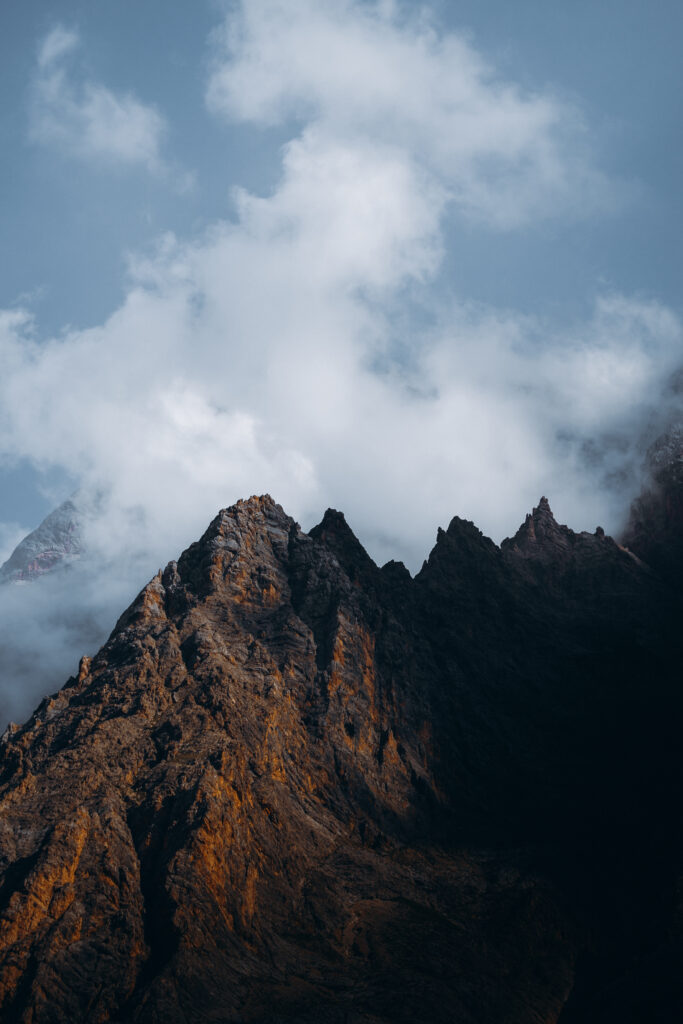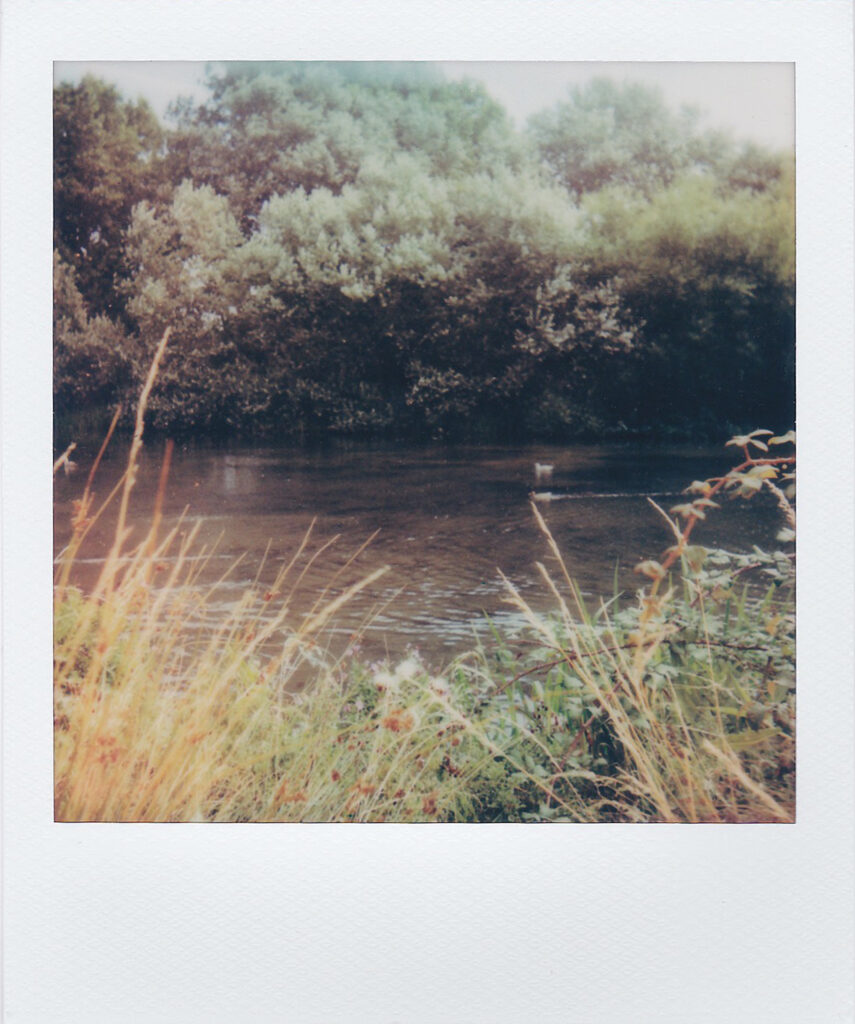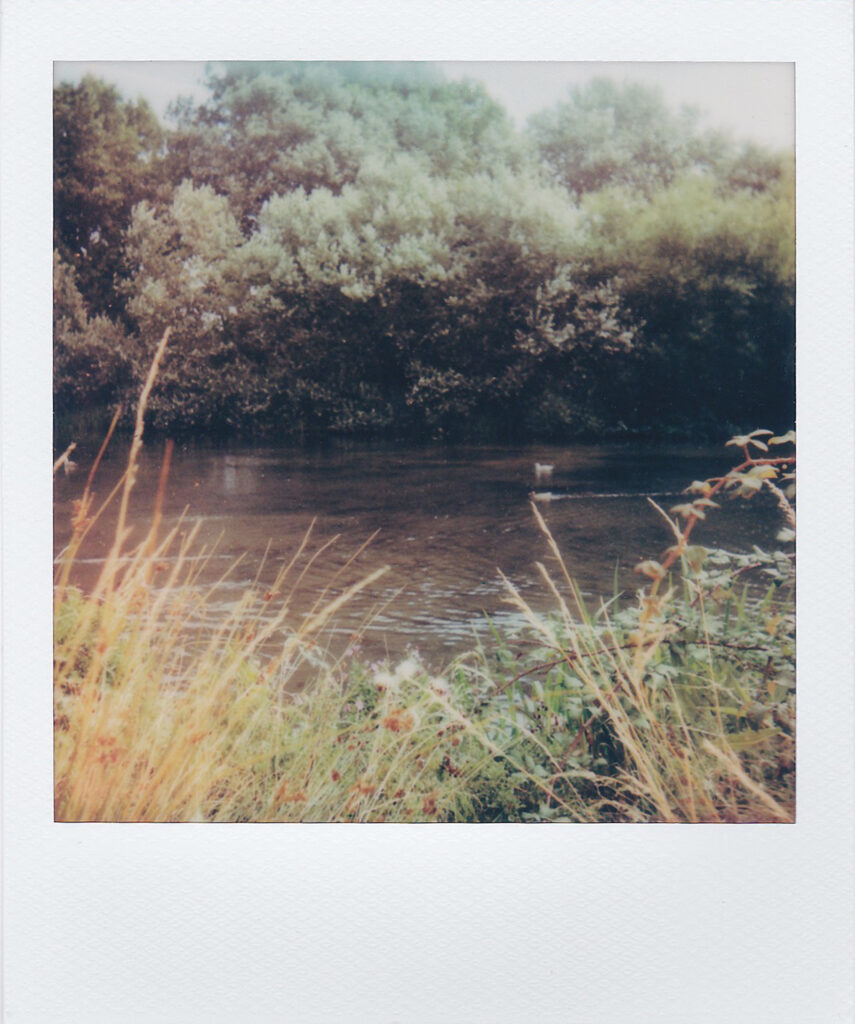If you are someone who finds solace in nature’s beauty and marvels at the wonders of wildlife, then exploring the art of wildlife observation is an experience you cannot miss. By immersing yourself in the serene world of nature, you get to witness the intricate dynamics of animal behavior up close and personal. From the majestic flight of an eagle to the delicate dance of a butterfly, each moment spent observing wildlife is a captivating adventure waiting to unfold. So grab your binoculars, put on your hiking boots, and get ready to embark on an unforgettable journey into the natural world.

The Benefits of Wildlife Observation
Promotes Mental and Emotional Well-being
Engaging in wildlife observation has numerous benefits for your mental and emotional well-being. Being in nature and watching wildlife can help reduce stress, anxiety, and depression. It provides a sense of tranquility and connection to something greater than yourself. The peacefulness of nature, combined with the excitement of spotting animals in their natural habitats, can have a calming effect on your mind and emotions. The beautiful sights and sounds of nature can also uplift your mood and improve your overall mental well-being.
Encourages Physical Fitness
Wildlife observation often involves exploring various habitats and walking or hiking through nature trails. This activity promotes physical fitness by providing opportunities for exercise and movement. Whether you are observing birds in a nearby park or tracking mammals in a nature reserve, the act of being outdoors and actively engaging with your surroundings contributes to your overall physical well-being. It can help improve cardiovascular health, strengthen muscles, and increase endurance. Wildlife observation is a fun and enjoyable way to stay active while immersing yourself in nature.
Fosters a Connection with Nature
In today’s fast-paced and technology-driven world, it is easy to become disconnected from nature. Wildlife observation allows you to reconnect with the natural world and foster a deep sense of appreciation and wonder for the environment. Observing animals in their natural habitats can provide insights into their unique behaviors, habitats, and ecosystems. It helps you recognize the delicate balance of nature and the importance of conservation. This connection with nature enhances your understanding of the world around you and instills a desire to protect and preserve it for future generations.
Educational Opportunities
Engaging in wildlife observation is an excellent educational opportunity, whether you are a beginner or an experienced nature enthusiast. It allows you to learn about different species, their behaviors, and their ecological significance. By observing wildlife, you can develop a greater understanding of the natural world and its intricate web of life. It presents an opportunity to expand your knowledge and learn from firsthand experiences. Additionally, wildlife observation can spark curiosity and inspire further exploration and research into various aspects of the natural world.
Choosing the Right Wildlife Observation Spot
Consider Local Habitats
When choosing a wildlife observation spot, consider the local habitats in your area. Different habitats provide unique opportunities for observing diverse species. For example, wetlands are home to a wide range of bird species, while forests may offer sightings of mammals and smaller creatures. Research the types of habitats present nearby and identify the ones that align with your wildlife interests. Consider visiting nature reserves, national parks, or designated wildlife observation areas, as these places often offer a rich variety of habitats and wildlife.
Research Wildlife Population
Before heading out to observe wildlife, it is helpful to research the wildlife population in your chosen area. Familiarize yourself with the species that are commonly found there, their behaviors, and their seasonal patterns. This knowledge will increase your chances of spotting specific animals and understanding their habits. Local wildlife organizations, nature centers, and online resources can provide valuable information about the wildlife populations in different regions.
Access and Safety
Ensure that the wildlife observation spot you choose is easily accessible and safe. Look for well-maintained trails, viewing platforms, or observation blinds that provide comfortable and secure vantage points. Familiarize yourself with any park regulations or guidelines to ensure you are respecting the environment and following any specified rules, such as staying on designated paths or keeping a safe distance from wildlife. Prioritize your safety and take appropriate precautions, such as carrying a map, informing someone of your plans, and being aware of potential hazards.
Observe Seasonal Changes
Wildlife observation can be enhanced by paying attention to seasonal changes. Different seasons bring about variations in animal activities, migrations, breeding behaviors, and even the availability of food sources. Research the seasonal patterns in your chosen area to plan your wildlife observation outings accordingly. For example, spring and fall are known for bird migrations, while winter may offer opportunities to spot wildlife adapted to colder climates. Observe how the landscape transforms throughout the seasons and how it affects the behavior and presence of wildlife.

Essential Wildlife Observation Gear
Binoculars
Binoculars are an essential tool for wildlife observation, allowing you to view wildlife from a distance without disturbing them. Investing in a good pair of binoculars will greatly enhance your wildlife watching experience. Look for binoculars with a magnification power of at least 8x to 10x and a wide field of view. Consider the weight and size of the binoculars to ensure they are comfortable to carry during extended periods of observation.
Camera and Accessories
Having a camera can help capture your wildlife observations and create lasting memories. A DSLR camera with a telephoto lens is ideal for capturing detailed images of distant subjects. Alternatively, a compact camera with a good zoom range can also be suitable for wildlife photography. Consider bringing additional camera accessories, such as a tripod or monopod for stability, extra memory cards, and spare batteries. These will ensure that you can document your sightings effectively.
Field Guides
Field guides are invaluable resources that provide information about the wildlife species you may encounter during your observations. These guides contain detailed descriptions, photographs, and illustrations of flora and fauna, allowing you to identify and learn about the wildlife you come across. Choose field guides specific to the region or habitats you will be exploring to maximize their usefulness. Many field guides also include maps, behavioral information, and habitat preferences to further enhance your understanding of the natural world.
Clothing and Footwear
When venturing into the outdoors for wildlife observation, it is important to dress appropriately. Wear comfortable and lightweight clothing that suits the weather conditions. Layering is key, as temperatures can vary throughout the day. Opt for neutral-colored clothing to blend in with the surroundings and avoid startling wildlife. Additionally, choose footwear that provides good traction and support, whether you will be walking on trails or navigating uneven terrain. Consider wearing waterproof or water-resistant footwear if you anticipate encountering wet or muddy conditions.
Ethical Wildlife Observation Practices
Respect Wildlife and their Habitat
Respecting wildlife and their habitat is crucial when engaging in wildlife observation. Remember that you are a visitor in their home and strive to leave as minimal impact as possible. Avoid disturbing or altering the natural environment, such as by moving rocks or logs, which may serve as animal shelters. Take care not to damage vegetation or disturb nesting areas. Stay on designated paths or trails to minimize your impact on the habitat while still providing ample opportunities for observation.
Maintain a Safe Distance
Maintaining a safe distance is essential for your safety and the well-being of wildlife. Approach animals cautiously to avoid causing them stress or fear. Use binoculars or a telephoto lens on your camera to get a closer look without intruding on their personal space. Different species require different distances; some may tolerate closer proximity, while others are more sensitive and easily startled. Research the recommended safe distances for the wildlife you wish to observe and adhere to those guidelines.
Avoid Disturbing Wildlife
Do not attempt to chase, startle, or provoke wildlife in any way. Sudden movements or loud noises can cause stress and disrupt their natural behaviors. Avoid playing loud music, shouting, or using flash photography close to animals. Be aware of your body language and minimize any threatening gestures. Observe animals from a distance and allow them to carry on with their activities undisturbed. Remember that the goal of wildlife observation is to observe and appreciate, not to interfere or disrupt.
Do Not Feed or Touch Wildlife
Feeding or attempting to touch wildlife is harmful and can have serious consequences for their well-being. Wildlife have specialized diets that suit their nutritional needs, and human food can be detrimental to their health. Feeding wildlife alters their natural foraging behaviors and may result in dependency, malnutrition, and disrupt their ecological balance. Additionally, touching wildlife can transmit diseases or cause stress and injury to the animals. Maintain a respectful distance and observe without interfering or altering their natural behaviors.

Common Wildlife Species to Observe
Birds
Birds are some of the most popular wildlife species to observe due to their vibrant colors, diverse behaviors, and melodic songs. Whether you are observing waterfowl on a pond, raptors soaring through the sky, or songbirds flitting in the trees, there is always something fascinating to discover. Pay attention to their flight patterns, feeding behaviors, and nesting activities. Learn to recognize bird calls and songs to identify different species. Keep a birding checklist to track the birds you have observed and strive to expand your bird identification skills.
Mammals
Observing mammals in their natural habitats can be an exhilarating experience. From the large and majestic like deer, elk, or bears, to the elusive and small like foxes, raccoons, or rabbits, mammals can be found in a variety of habitats around the world. Learn about their behaviors, feeding patterns, and the signs they leave behind, such as tracks, scat, or chewed vegetation. Observe from a distance and remember that some mammals are more active during certain times of the day or year. Patience and careful observation are key to spotting these elusive creatures.
Reptiles and Amphibians
Reptiles and amphibians offer a unique perspective on the natural world and can be fascinating to observe. From sunbathing turtles to slithering snakes, or the chorus of croaking frogs in wetlands, these creatures play vital roles in various ecosystems. Research the habitats and behaviors of reptiles and amphibians in your area to increase your chances of spotting them. Look for areas with suitable hiding places, such as rocks, logs, or ponds, as these creatures often seek shelter during the day. Be mindful of their fragile skin and habitats when observing and avoid touching or disturbing them.
Insects
Insects are often overlooked but are essential components of the natural world. Observing their behaviors can provide insights into their vital role in pollination and decomposition processes. Butterflies, dragonflies, bees, and beetles are just a few examples of insects that can be observed in various habitats. Look for areas abundant in flowering plants, like gardens or meadows, to attract a diverse range of insects. Learn to identify different species and their unique behaviors, such as butterfly courtship dances or ant colony interactions. Microscopes or macro lenses can provide a closer look at the intricate beauty of these small creatures.
Best Times and Seasons for Wildlife Observation
Morning and Evening
The early morning and evening hours are often considered the best times for wildlife observation. During these periods, known as the “golden hours,” wildlife tend to be more active, seeking food and socializing before or after the heat of the day. Birds, in particular, are highly active during these times, singing to attract mates or foraging for insects. Mammals may also be more easily spotted as they come out of their resting places to search for food. Plan your wildlife observation outings accordingly to maximize your chances of observing active wildlife.
Spring and Fall
Spring and fall are seasons characterized by unique wildlife activities, making them prime times for observation. In spring, animals emerge from hibernation, migratory birds return, and breeding behaviors begin. Flowers bloom, and trees come alive with vibrant foliage, creating an ideal backdrop for observation. Fall, on the other hand, is a season of change, as wildlife prepare for winter. Migratory birds embark on their long journeys, mammals engage in mating rituals, and trees display breathtaking autumn colors. These seasons offer a wealth of opportunities to witness the wonders of nature.
Consider Weather Conditions
Weather conditions can greatly impact wildlife behavior and visibility, so it is important to consider them when planning your wildlife observation outings. Clear and mild weather often results in increased animal activity and better visibility. Rainy days may offer unique opportunities to observe certain species, such as amphibians or birds taking shelter. Overcast days can create diffused light, ideal for photography, while windy conditions may affect animal movements. Monitor weather forecasts and choose suitable clothing and gear to ensure a comfortable and rewarding wildlife observation experience.
Migration Periods
The periods of migration are spellbinding times for wildlife observation, as countless species embark on long journeys in search of suitable breeding or wintering grounds. Birds, in particular, undertake incredible migratory journeys, with some traveling thousands of miles. Research the migration routes and timing of different bird species in your area to witness these awe-inspiring natural phenomena. Coastal areas, wetlands, or bird sanctuaries serve as important stopovers for migratory birds and are excellent places to observe large flocks of birds gathering before continuing their journeys.
Tips for Successful Wildlife Observation
Be Patient and Quiet
Patience and silence are key traits for successful wildlife observation. Animals may take time to appear, and sudden movements or loud noises can startle them away. Find a comfortable and inconspicuous spot, preferably behind camouflage or in a hidden location, and settle in for an extended observation session. Practice stillness and quietness, allowing wildlife to become accustomed to your presence. Remain focused and attentive, scanning your surroundings for any signs of movement or activity. Remember that wildlife observation requires patience, and the rewards lie in observing the natural behaviors of animals undisturbed.
Use All Your Senses
Engage all your senses to enhance your wildlife observation experience. Listen for distinct calls, songs, or rustling sounds that may indicate the presence of wildlife nearby. Observe the movements and behaviors of animals, noting any interesting patterns or interactions. Pay attention to scents, as some animals have distinctive odors or mark their territories with scent cues. Be observant of the landscape and vegetation, which may provide useful clues about the presence of specific wildlife species. By engaging all your senses, you can immerse yourself fully in the natural world and become more attuned to the intricacies of wildlife observation.
Observe from a Hidden Location
To increase your chances of closer wildlife encounters and minimize disturbances, observe from hidden or inconspicuous locations. Wildlife observation blinds, constructed to camouflage and blend with the environment, provide excellent opportunities for observing animals undisturbed. Use natural features, such as trees, rocks, or dense vegetation, as natural blinds. Position yourself downwind to avoid carrying scent towards animals. By observing from hidden locations, you can become an unnoticed observer, allowing wildlife to carry on with their natural behaviors and providing you with unique and intimate observations.
Learn Animal Behaviors
Familiarize yourself with the behaviors and habits of the wildlife species you wish to observe. Understanding animal behaviors can help you anticipate their actions and increase your chances of successful wildlife observations. Learn about their feeding patterns, mating rituals, territorial behaviors, or seasonal activities. Recognize the vocalizations, postures, or movements that indicate certain behaviors. This knowledge will enable you to interpret the behaviors you witness and gain insight into the lives of the animals you observe. Observing and learning from their behaviors opens a window into the fascinating world of wildlife.
Creating a Wildlife Observation Journal
Document Observations
Keeping a wildlife observation journal is a wonderful way to record and preserve your experiences in nature. Note down each wildlife species you observe, along with any interesting behaviors or interactions you witness. Include details such as date, time, and location to provide context to your observations. Document weather conditions, habitat descriptions, and any other notable details. Use your journal as a personal catalog of your wildlife encounters, fostering a deeper appreciation for the natural world and creating a valuable resource for future reference.
Include Date and Location
Recording the date and location of your wildlife observations is vital for tracking patterns and understanding the distribution of species. Note the exact location, including the name of the park, nature reserve, or specific trail you visited. Include GPS coordinates if possible. Documenting the date provides a framework for tracking seasonal patterns and animal activities. Over time, you can identify trends, such as migration periods or the emergence of specific species, contributing to your understanding of the natural rhythms of wildlife.
Sketches and Descriptions
In addition to written observations, consider incorporating sketches or drawings into your journal. Even simple sketches can be a powerful visual representation of the wildlife you observe. Pay attention to distinctive features, colors, or behaviors and try to capture them in your sketches. Write detailed descriptions of each observation to complement your sketches, noting sizes, shapes, or any noteworthy attributes. By combining sketches and descriptions, you create a comprehensive and personal record of your wildlife encounters.
Reflect on Experiences
Use your wildlife observation journal as an opportunity to reflect on your experiences and insights gained from each observation. Write about the emotions you felt, the connections you made with nature, or the new knowledge acquired. Reflect on any surprises or memorable moments during your wildlife observations. Consider the impact of your encounters on your well-being, personal growth, or understanding of the natural world. Reflecting on your experiences deepens your connection with nature and encourages a greater sense of awe and appreciation.
Joining Wildlife Observation Groups and Communities
Local Nature Clubs
Joining local nature clubs can provide opportunities for further learning, networking, and sharing experiences with like-minded individuals. These clubs often organize group outings, workshops, and lectures related to wildlife observation. Engaging with others who share a passion for wildlife can spark new insights and open doors to diverse wildlife observation experiences. Local nature clubs may also have knowledge of lesser-known observation spots or access to exclusive events or research projects.
Online Forums and Social Media
Online forums and social media platforms dedicated to wildlife observation allow you to connect with a broader community of nature enthusiasts. These platforms provide a space to ask questions, seek identification help, share photographs, and engage in discussions about wildlife observation. Connecting virtually with people from different regions or backgrounds can expand your knowledge and provide fresh perspectives. Social media platforms can also serve as a platform for showcasing your own wildlife photographs or stories, inspiring others and contributing to the broader conversation about conservation and wildlife appreciation.
Participate in Citizen Science
Engaging in citizen science projects is an exciting way to contribute to ongoing research and conservation efforts while enjoying wildlife observation. Numerous organizations and researchers rely on citizen scientists to collect data on various wildlife species or ecosystems. Participate in bird counts, butterfly surveys, or amphibian monitoring programs to contribute to scientific knowledge. Citizen science projects often provide training or educational materials, furthering your understanding and involvement in wildlife observation.
Attend Workshops and Events
Attending workshops and events focused on wildlife observation can enhance your skills, knowledge, and appreciation for nature. Look for opportunities to learn from experts in the field, who can offer guidance on species identification, photography techniques, or ethical observation practices. Many parks, nature centers, or environmental organizations offer wildlife observation workshops or events throughout the year. These gatherings allow you to connect with fellow enthusiasts, gain valuable insights, and take part in hands-on activities aimed at improving your observation skills.
Conservation and Advocacy through Wildlife Observation
Raise Awareness about Threatened Species
Wildlife observation can be a powerful tool for raising awareness about threatened or endangered species. By documenting your observations and sharing them with others, you can draw attention to the importance of conserving these species and their habitats. Highlight the unique behaviors or conservation challenges facing certain species through your photographs, stories, or social media posts. Encourage others to become more involved in conservation efforts and support organizations dedicated to protecting these vulnerable species.
Report Illegal Activities
As a wildlife observer, you may come across instances of illegal activities, such as poaching, wildlife trafficking, or habitat destruction. It is crucial to report these activities to the appropriate authorities or conservation organizations. By reporting, you contribute to the protection of wildlife and the preservation of their habitats. Document any relevant information, such as descriptions or photographs, to provide accurate and useful details when reporting. Your vigilance and action can help combat illegal activities and ensure the well-being and survival of wildlife.
Support Conservation Organizations
Supporting conservation organizations financially or through volunteer work is a meaningful way to contribute to wildlife preservation. Research and identify reputable organizations that align with your conservation interests and donate to their initiatives. Conservation organizations often play a crucial role in implementing conservation strategies, conducting research, and advocating for policy changes to protect wildlife and their habitats. Your support helps fund critical projects, such as habitat restoration, anti-poaching efforts, or public education campaigns.
Become an Advocate for Wildlife
Use your passion for wildlife observation as a platform to advocate for the protection and conservation of wildlife. Actively share your knowledge and experiences with others, whether through public speaking engagements, writing articles or blog posts, or even engaging in discussions with friends and family. Encourage ethical wildlife observation practices and highlight the importance of respect, conservation, and sustainability. By becoming an advocate, you can inspire others to develop a deeper appreciation and understanding of the natural world, fostering a broader movement towards wildlife conservation.




